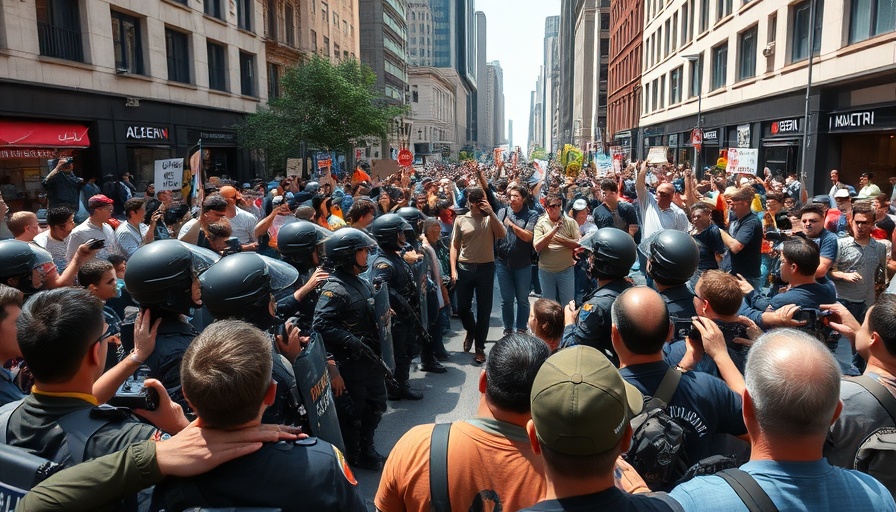
Understanding the Volume of Protests Against Immigration Policies
As the United States continues to face deep divisions over immigration policies, cities are bracing for an unprecedented number of protests. Los Angeles, known for its vibrant activism, is at the forefront once again. Authorities have indicated that demonstrations could surge in response to stricter immigration enforcement under the Trump administration. Activists' resolve is further fueled by recent raids conducted by Immigration and Customs Enforcement (ICE), igniting a collective desire for change across the nation.
Law Enforcement's Preparedness: A Double-Edged Sword
With reports highlighting a potential influx of demonstrators, the Los Angeles police chief, Jim McDonnell, emphasized his department's preparedness. However, while law enforcement's readiness is crucial for maintaining public order, the deployment of Marines to guard federal buildings raises questions about the militarization of police forces in domestic protests. This situation underscores the balancing act between ensuring safety and safeguarding the right to protest peacefully — a fundamental tenet of democracy.
The Power of Collective Action: A Nationwide Call
The protests scheduled for the coming days are marked by a distinct unity known as the "No Kings" demonstrations, a movement planned to take place across all 50 states. Such collective action not only amplifies voices against immigration raids but also serves as a testament to the enduring spirit of activism in America. The sense of urgency and solidarity in these movements can empower citizens to engage with their communities and advocate for justice on broader scales.
Steep Consequences for Violence: What You Need to Know
Officials have been clear in their warnings: violent protests will not be tolerated. The ramifications of turning a peaceful protest into a violent clash could include not only legal actions against individuals but also a chilling effect on the freedom of expression. Understanding the fine line between peaceful protest and violence is critical; when demonstrations take a turn for the worse, the message intended often becomes lost amid chaos.
Local vs. Global Perspectives on Protests
This tension isn't just a local issue. Globally, countries are grappling with the fallout of protests and the response of law enforcement agencies. In nations like France, similar dynamics have emerged during the yellow vest protests, with citizens asserting their rights while facing stringent crackdowns. The parallel highlights a significant dialogue about civil rights and state power — a conversation that transcends borders and resonates with citizens worldwide.
What This Means for Families and Communities
For families and communities caught in the crossfire of these demonstrations, the stakes are incredibly high. Parents are often anxious about the safety of their children, particularly in volatile protest environments. It's essential for families to engage in discussions about civic responsibilities, the importance of peaceful advocacy, and the consequences that can arise from violence. Communities can harness these moments to educate and empower individuals — emphasizing the role of dialogue and understanding in social change.
Conclusion: Engaging Responsibly in Civic Matters
The upcoming protests in Los Angeles and across the nation are a vital opportunity for citizens to express their views on immigration policies. However, the potential for conflict serves as a reminder of the importance of maintaining the integrity of peaceful protests. Communities should rally together to encourage responsible activism that respects diversity and dissent, paving the way for a future where dialogue is favored over conflict.
 Add Row
Add Row  Add
Add 




 Add Row
Add Row  Add
Add 

Write A Comment